Why are “zones” rioting? Latin America as a region of prison riots
With a grand rebellion of prisoners, the new year began in one of the prisons of Brazil. In the area of the large city of Manaus, in the Amazonian jungle is located one of the many Brazilian prisons - Anisio Jobim. It was here that 1 January 2017 and the tragic events occurred. While the exact details of the rebellion and its suppression are unknown. But authorities report that at least sixty convicts died. They were the victims of clashes between opposing groups formed from people involved in the drug business. We are talking about such large organized crime groups as the First Metropolitan Command, based in Sao Paulo, and the Northern Family, which controls the situation in the Amazonia prisons.
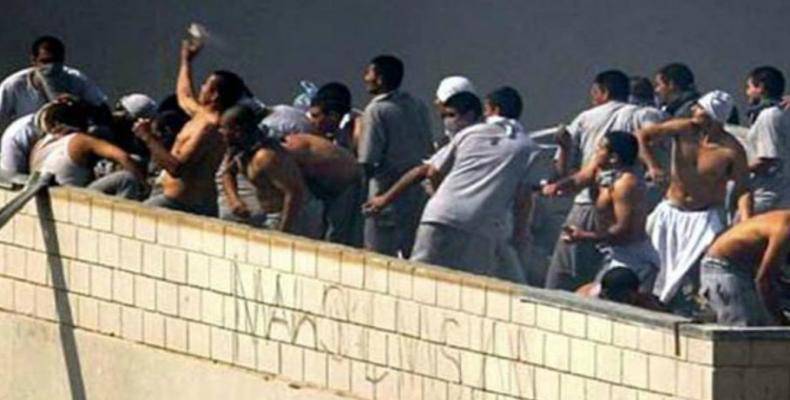
Amazonas Governor José Melo de Oliveira has already hurried to announce that after seventeen hours of clashes, the situation in the prison was brought under the control of the administration. Justice Minister Alejandro di Morais promised the governor support for the federal security forces if it was needed to pacify the rioters. Some of the bodies of the dead convicts were disfigured - burned or beheaded. So mocked at them "fighters" from competing groups.
Brazil has long been known for the difficult situation in its prisons. The country has a very high crime rate. Over 600 thousands of people are held in prisons. Prisons are overcrowded, there are not enough guards, and several rival factions often fight in every prison for domination among convicts. As a rule, they are still in the wild - from the number of drug dealers and their accomplices. “Free clashes” for narcotic money are transferred to prison. The regime in Brazilian penitentiaries is hardly soft, but riots happen very often. And, as a rule, do not do without numerous human victims. More recently, October 16 2016, similar events unfolded in the Boa Vista prison in northern Brazil. Here, in an institution designed for 740 prisoners, they were serving sentences of over 1,4 thousands of people. On October 16, on Sunday, one of the groups of prisoners broke into the other building of the prison and put up a fight with another group. The rebels took 100 hostage to visitors who, to their misfortune, came to the prison that day to see the arrested relatives and friends. Soon the hostages were able to free. But as a result of a fight between prisoners, at least 25 prisoners died.
An even bigger uprising ending in one of the most widespread stories Brazil organized prisoners escapes, occurred 29 September 2016 of the year. In the prison, located in Sao Paulo, one of the most important cities in Brazil, at the time of the uprising there were over 2000 prisoners - and this despite the fact that the prison premises are designed for no more than 1080 convicts. In the end, dissatisfaction with the conditions of detention led to a riot. Prisoners escaped from prison near 200. The institution was called to the special units of the prison administration and the military police units. Special Forces officers were able to block most of the prisoners in the prison. At this time, the military police organized a search for fugitives. The police managed to detain over 100 people who were trying to hide and wait out a search operation in the reed fields located near the prison. But about 100 criminals managed to escape.
Prison Break Sao Paulo "broke" the January record of 2016 of the year. Then, on January 24, 2016, the mass escape of prisoners took place in the Damiao de Bonzanno prison. This penitentiary is located in Recife, the largest center of the state of Pernambuco in eastern Brazil. The prisoners Frey Damiao de Bonzanno prepared for their escape in advance. Shortly before escaping, the unidentified managed to undermine the prison wall, as a result of which the prisoners climbed into the resulting opening. The guards opened fire, two prisoners were killed, and 40 people were detained. By the way, just three days earlier, on January 21 of 2016, Professor Barreto Campello from prison, also in the vicinity of Recife, escaped from prison 53. In this case, the police managed to detain all the fugitives after a while. Impressive is the story of the prison break Vicente Pirajibe, located in the famous Rio de Janeiro. In February 2013, 27 people escaped from this institution. The prisoners for a long time, secretly from the guards, were digging a special tunnel from the cell, which they managed to “wedge” into the sewer system of the institution. Through this tunnel, prisoners fled beyond the prison.
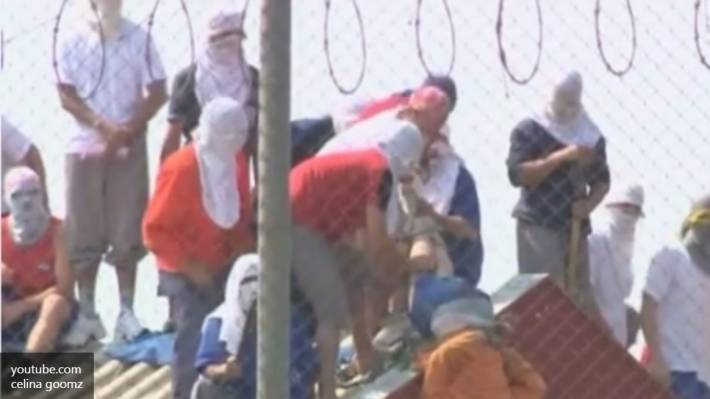
Brazil leads in number and “heat” of prison riots among other Latin American countries. This is easily explained, since Brazil is the most populous country in South America, and it has the largest number of prisoners. In October, 2008, during a riot in Karandir prison, killed more than 100 people. In contrast to Russia and other countries of the former USSR, in Latin America, prison riots are more likely not uprisings against the prison administration for improving conditions of detention, but episodes of the internecine struggle of influential criminal clans. Their cruelty is explained by the fact that “free-style” competition of criminal groups is transferred to the “zone”.
The most powerful Brazilian criminal groups have a long history and their traditions. So, the First Metropolitan Team (Primeiro Comando da Capital), which became one of the organizers of the 1 riot in January 2017 in Manaus, emerged in 1993, more than twenty-three years ago, in São Paulo. According to the Brazilian law enforcement agencies, the First Metropolitan team has over 13 thousands of members. Over 6000 of them are serving sentences in Brazilian prisons. This is the largest criminal group in the country. It was the backbone of the 8 criminals who survived the October 9 1992 grand rebellion. Then, during the suppression of the uprising of prisoners, 111 people died. In 2006, the number of gangs reached 756 people, and then it grew more than ten times - primarily due to the recruitment of young people. "Children of slums" make up the bulk of grass-roots fighters of the group.
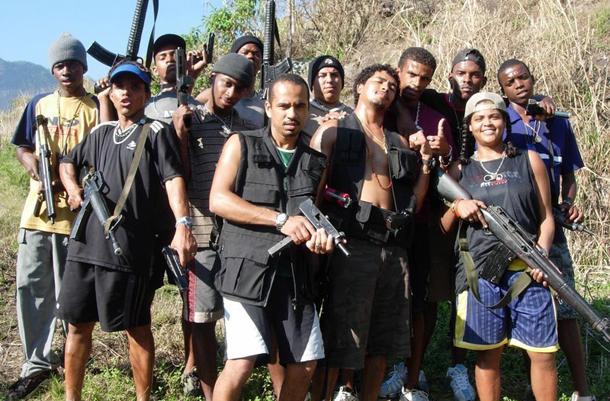
"The first metropolitan team" is trying to create a positive image in the public eye. Thus, she constantly advocates the mitigation of the conditions of punishment in Brazilian prisons. In 2001, the First Metropolitan Team managed to organize uprisings and unrest in twenty Brazilian prisons. 12 May 2006 The group raised a real uprising in São Paulo, which killed 140 people. 70 buses were burned in the city, public transport stopped to go. Only the efforts of the police and military forces mobilized to suppress the uprising managed to cope with the actions of the group. Of course, the First Capital team has numerous competitors. In the prisons of Brazil, this is, first of all, the “Northern Family”, which arose among the prisoners of the state of Amazonas. It was one of its leaders who provoked mass riots in the prison of Manaus, deciding to "get it right" for spheres of influence with representatives of the First Capital Team.
Prison riots are not uncommon in other Latin American countries. For example, Mexico, although it cannot argue with Brazil over the status of the “capital of prison riots”, is nevertheless also distinguished by constantly flashing unrest among the prisoners. The crime situation in Mexico is very tense. Some areas of the country are practically not controlled by government security forces. As in Brazil, drug trafficking groups are very strong in Mexico. They are the main initiators of prison riots. For example, in February 2016, a major prison riot broke out in Topo-Chico Prison in the northeast of the country. As a result of the riot, at least 50 people died. Relatives of the prisoners then complained to human rights activists that they saw the convicts with burn marks - apparently, after the special forces fired at the rioters, a fire broke out in the prison. Some convicts, however, managed to escape.
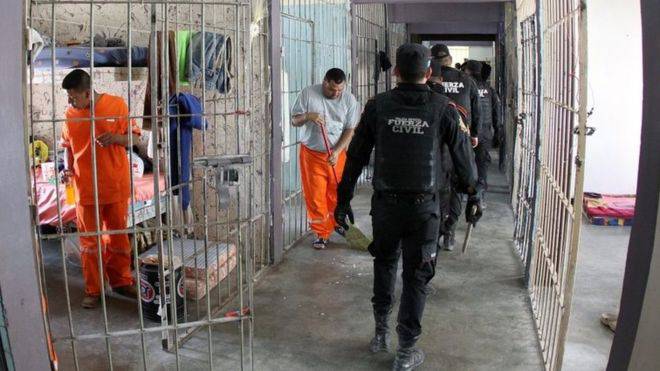
The governor of Nuevo Leon, Jaime Rodriguez, in an interview with reporters then said that the unrest in Topo Chico was caused by competitive confrontation between criminal groups fighting for the drug market. The struggle of Mexican gangs extends to places of deprivation of liberty, where sooner or later many of the participants in criminal groups find themselves. In February 2016, the riot in Topo Chico was crushed by security forces, but in June 2016 the same prison again fell into the top world News. This time, as a result of the next uprising in Topo Chico, three of the convicts died. Among the employees of the administration and the fighters of the security forces, no one was hurt, and the riot was quickly suppressed, ”Secretary General of the Nuevo Leon State Manuel Gonzalez reported to the public. However, the situation in the Topo Chico prison normalized only temporarily. Already on October 13, 2016, prisoners again revolted, during which at least one person died and eight were injured of varying severity.
The situation similar to the Brazilian and Mexican situation is also observed in most other Latin American countries. For example, in Venezuela 30 August 2016, a grand uprising took place in the prison in the city of Maracaibo, in the west of the country. Here, also, unrest began with a fight between participants of competing criminal groups, which grew into a bloody showdown. At some point, one of the criminals threw a grenade. At least ten people were killed in the explosion, another sixteen were injured. The prison was in the power of the rebellious prisoners for at least a day. Only 31 August prison guards with the help of police arrived units were able to regain control of the situation in the institution. Human rights activists report that in total Venezuela has at least 26 thousands of prisoners. Most of them are kept in poor conditions, in overcrowded cells, and are bullied by security guards. Wars between criminal groups also constantly accompany the life of Venezuelan penitentiary institutions.
From September to October, 2016 continued a grandiose revolt of prisoners in another Venezuelan prison. During the riot three prisoners disappeared without a trace. Subsequently, the father of one of the missing men told the media that the missing people appeared to have been eaten by representatives of a rival group. Venezuelan law enforcement officials, of course, denied information on cannibalism in the penitentiary, but confirmed the fact that the prison was overcrowded - instead of 120 people there were 350 prisoners. The overcrowding of the cells caused a grandiose riot at the Pre-Trial Detention Center in the Venezuelan capital, Caracas, which occurred in April 2015. Here in the cells designed for 20 people were held for 60 prisoners. In the end, the prisoners rebelled. For more than a day the preliminary detention center was in the hands of the rioters, and only then the security forces were able to restore order in the institution.
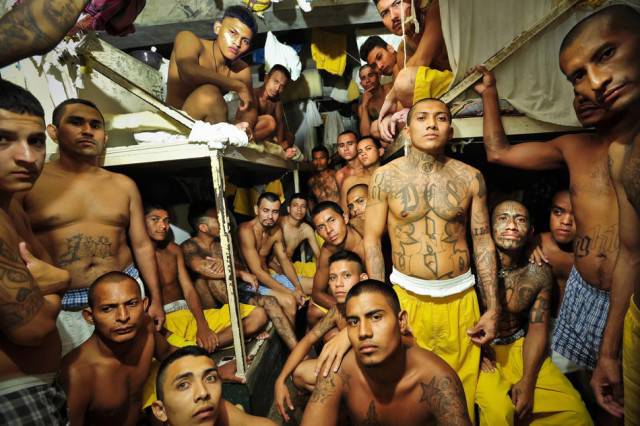
Perhaps even worse than in Brazil, Mexico or Venezuela, the situation in the penitentiary institutions of the “countries of the isthmus”. El Salvador, Guatemala, and Honduras are economically underdeveloped states with a very high crime rate. More than half of the cocaine produced in Central America comes from El Salvador and Honduras. Of course, there are very many gangs integrated into the drug trade. They are well armed and have to attract an army to fight them. In July, 2016, the death of four prisoners ended clashes between rival factions in the prison of the city of Quetzaltepec in El Salvador. The real massacre in prison was made by the militants of the gang Barrio 18. This famous Salvadoran criminal gang was born among immigrants in the city of Los Angeles in the United States. Then she extended her activities to her homeland - to El Salvador. In July, 2016, there were major clashes in the Guatemalan Pavon prison, in which 13 prisoners were killed.
There are two main causes of riots in Latin American prisons. First, it is the conditions of detention. In most Latin American countries, prisons are very crowded. Often in a penitentiary institution there are two to three times as many convicts as are required by the rules. Secondly, the Department for the Execution of Sentences does not distinguish between criminals belonging to different groups and clans of the criminal world of Latin American states. Therefore, after the arrest and sentence in one prison, there may be “fighters” of rival groups in the wild. “Free-style” competition is transferred to relations within the prison institution — and that disassembly begins already behind the barbed wire of Latin American “zones”. In addition, criminal groups often begin riots not so much to clarify relations with competitors, but rather to disorganize the order in prisons. During a rebellion, it is much easier to escape from the penitentiary institution, than its initiators can use.
Information